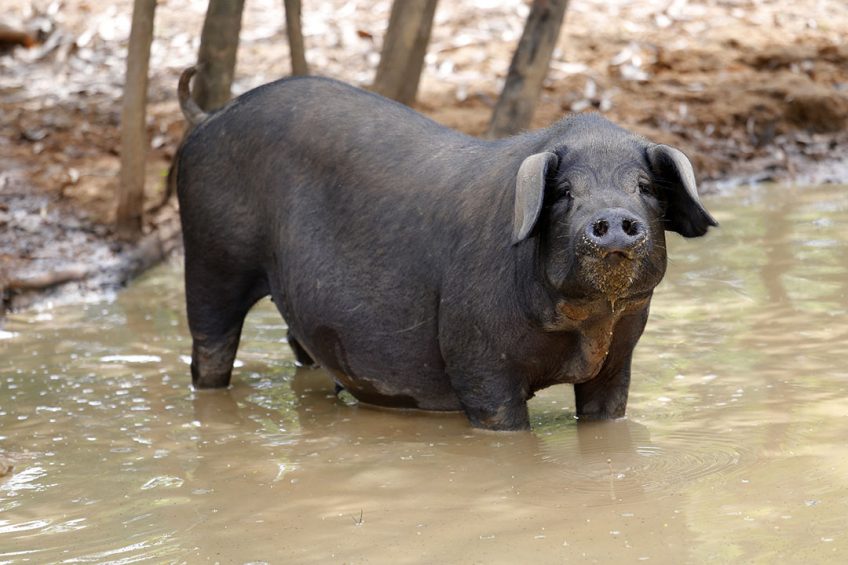Controlling feral pigs in the US and Canada

Feral pigs are a growing problem in North America. While a national control strategy is now in place in the US with pilot projects underway, Canada has nothing similar – and Canada’s pork industry may pay the price.
Whilst African Swine Fever (ASF) is not yet found in North or South America, even one case could spread quickly across the US and Canada if it enters the enormous and rapidly-growing population of wild pigs. Control of the population in both countries has proven fruitless so far.

In the 1970s and 1980s, ASF occured in various countries in the Caribbean as well as Brazil. How did they solve the problem then?
Spread of feral pigs in Canada
A few decades ago feral pigs were brought from Europe (where they are usually called wild boar) to Canada. There, they mated with domestic pigs. Some of the hybrids either escaped or were freed, and at this point, their descendants have spread from British Columbia to Quebec.
Mapping the American feral pig population
Dr Ryan Brook, an associate professor at the University of Saskatchewan, has been leading efforts to map the population in the Wild Pigs Canada Project for years. He and PhD student Ruth Aschim have spent recent years mapping distribution using trail cameras, GPS data (attaching collars to pigs they caught) and interviews with landowners.
Sharp tusks help wild pigs fend off predators such as wolves – and in any case, it would take a very determined effort by a pack of wolves or a bear to take down one of these massive animals, which often live in groups and have individual weights that can exceed 600 pounds (about 270 kg, ed.).
Large wild pig body size and survival
“A large body size is particularly important for surviving extreme cold,” added Brook. Winters in parts of Canada have extremely cold temperatures, and during the winter of 2018/2019, at least 12 low temperature records were broken in Saskatchewan.

Perhaps due to the harsh winters, some Canadian hybrid wild pigs are considering a move south. It was reported about 9 months ago that US officials are monitoring wild pig movements at the border between Saskatchewan/Alberta in Canada and the state of Montana.
Key to the amazing spread
Sharp tusks and winter hardiness aside, the key to the amazing spread of the hybrid wild pigs in Canada (about 90,000 km2 per year) said Brook, is their astounding reproductive rate. Canadian wild pigs have an average of 6 young per litter, sometimes more than 1 litter a year, and become sexually mature by about 6 months of age.

Track the movement of African Swine Fever
For everything you need to know about ASF, from the latest outbreaks to controls stay up to-date…
Control of wild pig populations is difficult
According to Brook, wild pig populations have been wiped out in several US states using a multi-pronged strategy. He explained that “wild pigs are always rather nocturnal and tend to become even more so under hard pressure, so efforts at quick and focused elimination are key. Ground trapping can occur at night and is a key part of an eradication effort”. There is a need, said Brook, to pause or eliminate sport hunting, which he considers “a key factor in helping the spread of wild pigs and one that remains a major barrier to eradication. No [jurisdiction] that allows sport hunting of wild pigs can claim to be serious about eradication.”

Wild pig hunting for sport using a helicopter
Sport hunting of wild pigs is a popular traditional sport in many parts of the US and there is resistance to hunting bans. As the Washington Post reported last year, it is even currently legal in Texas for sport hunters to hire a helicopter and shoot wild pigs from the air. However, with sport hunting combined with all other cases, in total each year only perhaps 30,000 wild pigs are killed in Texas, and the population (just within that state) is estimated to be over 2 million. In Brook’s view, there are areas in both the US and Canada where eradication of wild pigs is no longer possible.

In recent times, the Czech Republic has been the only country to eradicate ASF in its wild boar population. How did they do that?
National funding for reducing wild pig numbers
Still, the US government is serious about reducing wild pig numbers. In June 2019, the US Department of Agriculture (USDA) announced $75 million in funding for the Feral Swine Eradication and Control Pilot Program. Some of the money is going towards pilot projects in targeted areas of the country and will involve partnerships with landowners. Brook is calling for strong leadership for population control in Canada. “That is the biggest missing piece right now – in government and in the domestic pig industry, which is at great risk due to wild pigs,” he said. “Each province needs a science-based management strategy (only Alberta has one so far) and an overall collaborative national strategy.”











